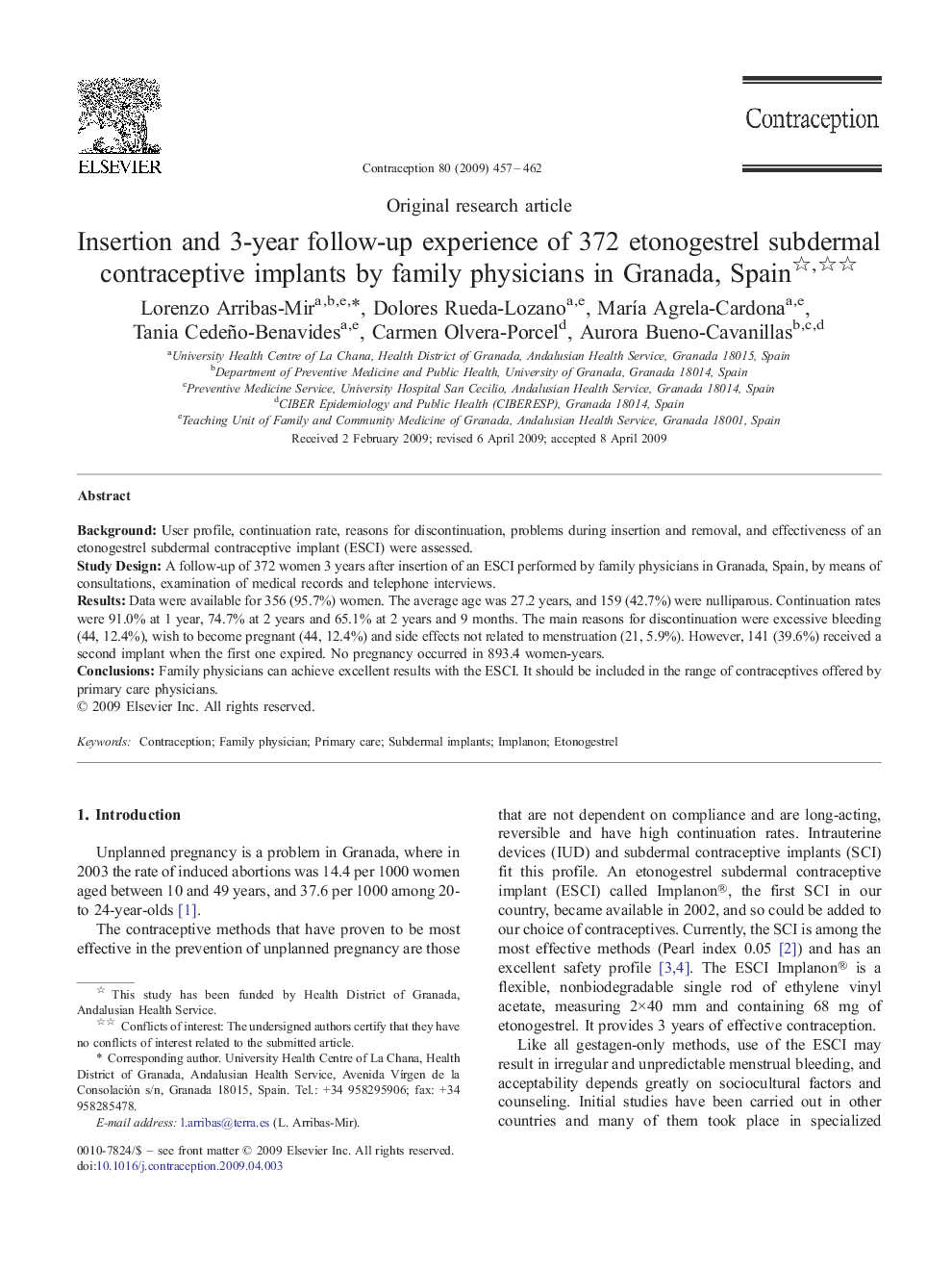| Article ID | Journal | Published Year | Pages | File Type |
|---|---|---|---|---|
| 3915306 | Contraception | 2009 | 6 Pages |
BackgroundUser profile, continuation rate, reasons for discontinuation, problems during insertion and removal, and effectiveness of an etonogestrel subdermal contraceptive implant (ESCI) were assessed.Study DesignA follow-up of 372 women 3 years after insertion of an ESCI performed by family physicians in Granada, Spain, by means of consultations, examination of medical records and telephone interviews.ResultsData were available for 356 (95.7%) women. The average age was 27.2 years, and 159 (42.7%) were nulliparous. Continuation rates were 91.0% at 1 year, 74.7% at 2 years and 65.1% at 2 years and 9 months. The main reasons for discontinuation were excessive bleeding (44, 12.4%), wish to become pregnant (44, 12.4%) and side effects not related to menstruation (21, 5.9%). However, 141 (39.6%) received a second implant when the first one expired. No pregnancy occurred in 893.4 women-years.ConclusionsFamily physicians can achieve excellent results with the ESCI. It should be included in the range of contraceptives offered by primary care physicians.
